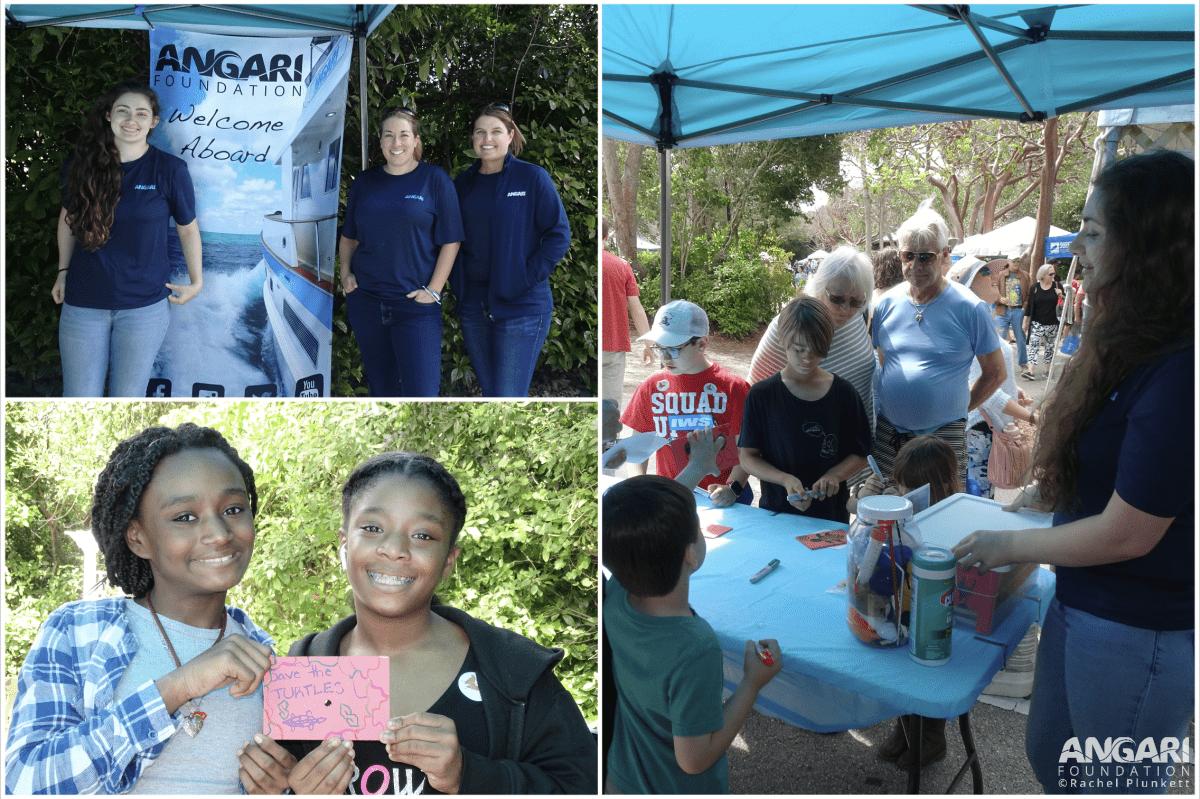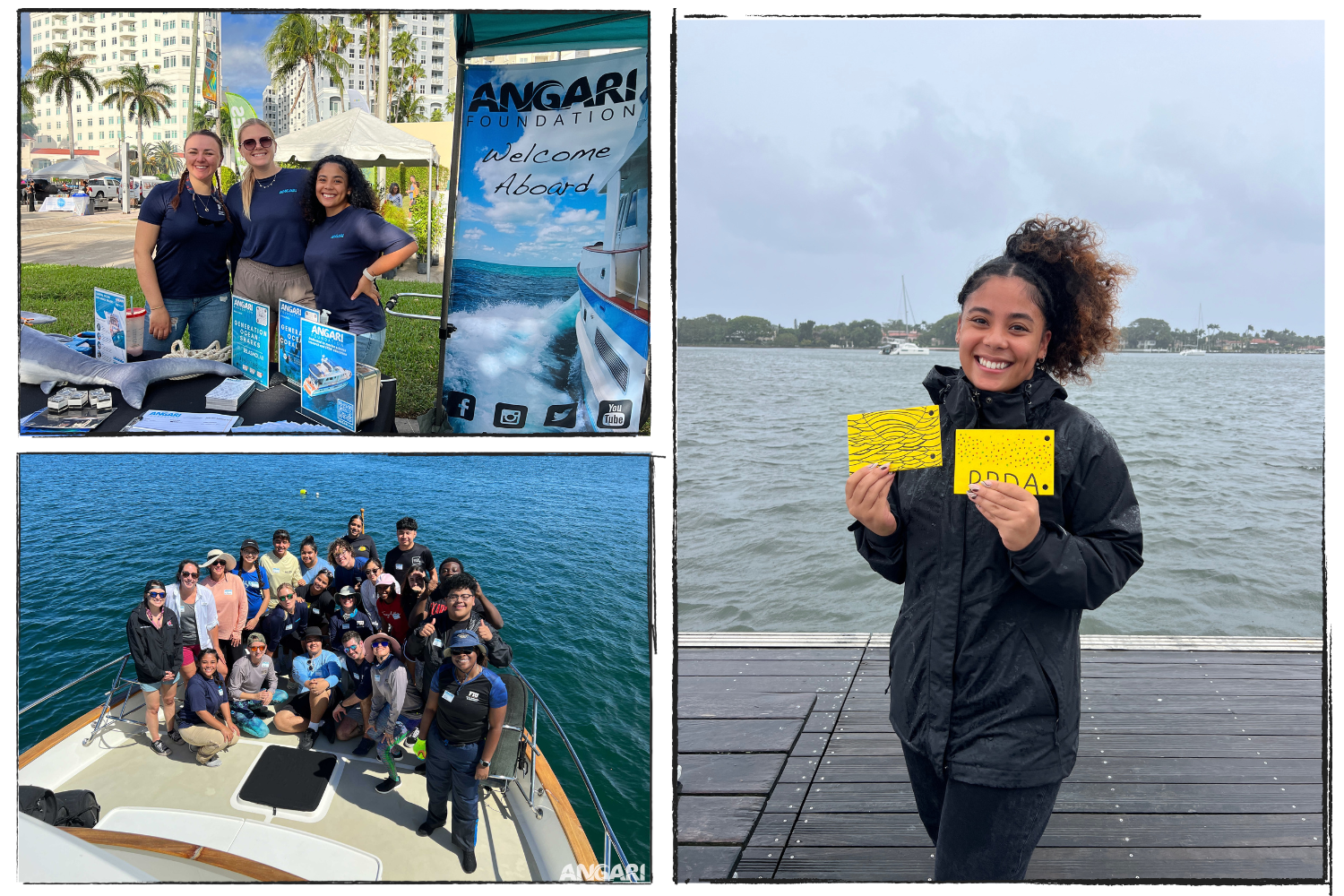Having the opportunity to intern with ANGARI Foundation has been an exciting and unforgettable adventure! My time here has been full of new experiences, growth, furthering my craft and developing a deeper passion for our marine environments. As an intern, I focused on creating two video projects that convey the purpose and heart behind the programs Coastal Ocean Explorers: Sharks and Lagoon Drift.

Outreach at Sea Turtle Day Festival 2020
By Kayla Windelspecht – Spring 2020 Intern
My first experience with science outreach began on Saturday, March 7th, when ANGARI Foundation participated in the Sea Turtle Day Festival at Gumbo Limbo Nature Center. Gumbo Limbo, located in Boca Raton, Florida describes itself as “a beacon for environmental education, research, and conservation.” The nature center conducts school programs with students, sea turtle conservation programs, and research with Florida Atlantic University, among other local projects aimed at encouraging public awareness of Florida’s wildlife and environment. For Sea Turtle Day, organizations and vendors sharing these goals set up exhibits around the nature center property for guests to visit, creating a festival focused on conservation and appreciation of our natural world.
ANGARI Foundation’s preparation for Sea Turtle Day – and, by extension, for the Lagoon Drift Card Study, began several weeks ago. Lagoon Drift is a long-term collaborative citizen science study that uses small wooden drift cards to observe the motion of water and pollutants in the Lake Worth Lagoon and surrounding waterways. The cards are eco-friendly, being made from degradable untreated plywood and decorated with brightly colored non-toxic materials. They are lightweight and designed to be carried along by currents. Some will drift into marinas and wash up on beaches or waterfronts where citizen scientists can find them, while those not found begin to degrade after a couple of weeks. Stamped instructions on the front of the cards ask those that find them to report the date, time and location, as well as a picture of the card to [email protected]. Through compiling data from the card release and recovery, ANGARI and partners learn more about the waterways of the Lake Worth Lagoon and the potential movements and hotspots of marine debris from various sources.
Of course, creating the drift cards and getting them ready for deployment is a time-intensive effort. This next experiment will use six sites, each with forty cards. To prep the cards, they each have to be cut from plywood, sanded, painted, drilled and stamped. Our main event for Sea Turtle Day involved spreading awareness for Lagoon Drift by asking guests to decorate the drift cards with their own design or a message.

There are several reasons to decorate drift cards. The first is visibility; people are more likely to pick up something on the beach if it has a colorful drawing on it, and therefore more likely to see the drift card’s instructions and report it back to ANGARI. The other, and arguably larger, reason is to further involve the community in the Lagoon Drift experience. Part of ANGARI’s mission is to increase community engagement by offering enriching opportunities to explore the marine world. By stopping by our tent and helping us with the Lagoon Drift preparation process, guests not only learn about the experiment itself but also become more invested in the study as citizen scientists.
We arrived at Gumbo Limbo Nature Center at 7:30 AM to set up ANGARI’s exhibit for the event. By 9:00 AM, the gates opened and guests began to arrive. Most of our visitors were young children who loved the idea of using non-toxic markers to draw fish or sea turtles on the cards. My job was to oversee the table, make sure no one wandered off with the drift cards, and explain the details of Lagoon Drift to curious visitors. All around us, other organizations explained their own purposes and objectives. The details were different, but our goals were the same: we all wanted our guests to walk away more conscious of their relationship with the marine environment and the importance of protecting it.
This sense of community was, to me, the most amazing part of the Sea Turtle Day Festival. Not only were we surrounded by like-minded people and organizations, but also thousands of visitors who were all there because of an appreciation for nature. Every person who came up to our tent did so because they wanted to know more about what we were doing. People of all ages asked questions to learn more about the study; many of them wanted to know what the information gathered from Lagoon Drift would be used for and how it could help the environment. The lesson that I learned is that, if you give people the opportunity to engage in science and conservation, many of them will jump at the chance. We’re all looking for a way to get involved.
Sea Turtle Day 2020 was a fantastic experience for me. I was able to become involved in public outreach and science communication, two of my own personal goals, and also to see the response of the community to our actions. This made all the work put into Lagoon Drift preparations more than worth it, even before the experiment itself has started. All in all, I loved my first ANGARI outreach event, and I’m looking forward to the next one!




